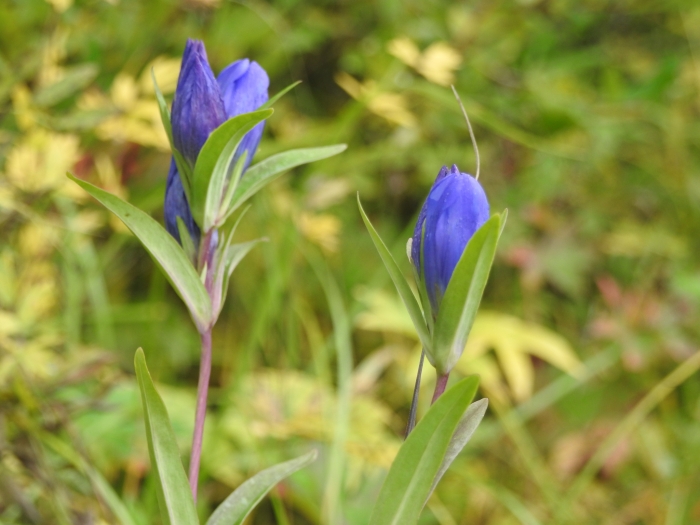Clustered Gentian
(Gentiana triflora)
Clustered Gentian (Gentiana triflora)
/
/

Анна Васильченко
CC BY 4.0
Image By:
Анна Васильченко
Recorded By:
Copyright:
CC BY 4.0
Copyright Notice:
Photo by: Анна Васильченко | License Type: CC BY 4.0 | License URL: http://creativecommons.org/licenses/by/4.0/ | Rights Holder: Анна Васильченко | Publisher: iNaturalist | Date Created: 2020-09-01T11:16:38-07:00 |

























Estimated Native Range
Summary
Gentiana triflora, commonly known as clustered gentian, is a perennial herb that is native to alpine and subalpine meadows, as well as moist forest margins in East Asia, including China, Mongolia, Eastern Russia, Korea, and Japan. It typically grows at elevations of 1,970-3,280 feet (600-1,000 meters). This species can reach up to 24 inches (60 cm) in height and features erect stems with whorls of lance-shaped leaves. The flowers are a striking true blue, sometimes with a hint of violet, and are notable for their intense coloration derived from the anthocyanin gentiodelphin. Flowering occurs from late summer to early autumn, and the blooms are quite showy, making them a highlight in the garden during this period.
Clustered gentian is valued for its vibrant blue flowers which can add a splash of color to late-season gardens. It is often used in rock gardens, borders, and wildflower meadows. This plant prefers consistently moist, well-drained soils with a neutral to slightly acidic pH and requires full sun to partial shade. While generally low-maintenance, it can be susceptible to root rot if overwatered or planted in poorly drained soils. Gentiana triflora is not known for aggressive roots or significant disease problems, but slugs and snails can sometimes be pests. It is not considered invasive outside its native range.CC BY-SA 4.0
Clustered gentian is valued for its vibrant blue flowers which can add a splash of color to late-season gardens. It is often used in rock gardens, borders, and wildflower meadows. This plant prefers consistently moist, well-drained soils with a neutral to slightly acidic pH and requires full sun to partial shade. While generally low-maintenance, it can be susceptible to root rot if overwatered or planted in poorly drained soils. Gentiana triflora is not known for aggressive roots or significant disease problems, but slugs and snails can sometimes be pests. It is not considered invasive outside its native range.CC BY-SA 4.0
Plant Description
- Plant Type: Herb
- Height: 1-2 feet
- Width: 0.5-1 feet
- Growth Rate: Moderate
- Flower Color: Blue
- Flowering Season: Fall
- Leaf Retention: Semi-deciduous
Growth Requirements
- Sun: Part Shade
- Water: Medium
- Drainage: Medium
Common Uses
Border Plant, Low Maintenance, Potted Plant, Rock Garden
Natural Habitat
Alpine and subalpine meadows, and moist forest margins in East Asia
Other Names
Common Names: Three-Flowered Gentian, Clustered Gentian
Scientific Names: , Gentiana triflora, Gentiana triflora var. triflora,
GBIF Accepted Name: